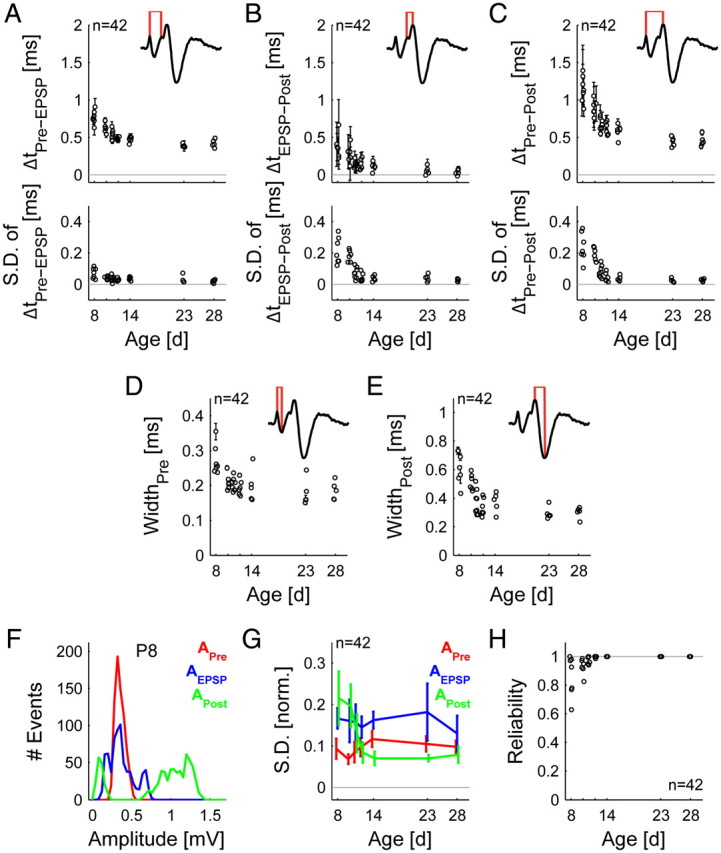Figure 3.

Dynamics and reliability of transmission events change during maturation reaching stable levels around hearing onset. A–C, The transmission delay speeds up (top) and becomes less variable (bottom) during maturation, both for the part from the peak of the presynaptic AP to the peak of the EPSP (A) (p < 0.001) and that from the peak of the EPSP to the peak of the postsynaptic AP (B) (p ≪ 0.001), and also for the AP transmission delay (C) (presynaptic AP peak to postsynaptic AP peak, p ≪ 0.001). D, E, The width of both the presynaptic (D) and the postsynaptic AP (E) decreased with age (p ≪ 0.001) F, The distribution of amplitudes of the three components differs in prehearing animals. The presynaptic AP amplitude (APre) is tightly distributed, while the EPSP (AEPSP) and the postsynaptic AP (APost) amplitudes show much wider distributions. If AP transmission fails, the distribution of APost becomes bimodal (as in the P8 example depicted here). Due to the presence of noise and the EPSP, the fitted APost amplitudes are positive rather than 0. G, These results were further quantified by the SD normalized by dividing by the maximal value for each variable. Only APost shows a significant change as a function of age (p ≪ 0.001), while APre and AEPSP did not systematically change across age. H, Reliability of transmission increases significantly with age, reaching practically flawless transmission around hearing onset. Data are plotted as mean ± SD and were obtained from 42 single-units with 5–8 units per age.
